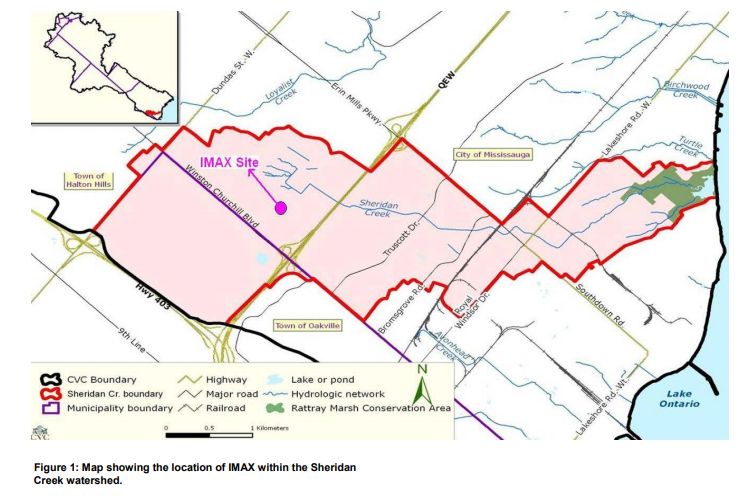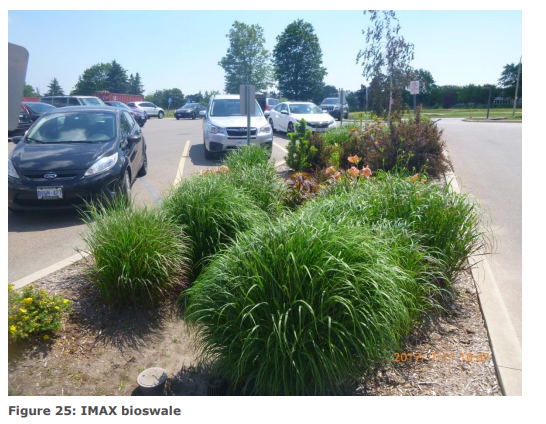Understanding and Assessing Impacts
Local climate projections were one of the drivers for CVC’s LID monitoring that led to the monitoring of the IMAX project. The primary goals associated with this corporate-focused project included improving the function, efficiency, and aesthetic of the parking lot, allow for future expansion, lower operational costs, limit IMAX’s potential stormwater utility costs, upgrade the existing parking lot and stormwater management infrastructure from asphalt and traditional stormwater conveyance systems to modern LID techniques. It should be noted that building climate change resilience is a secondary goal of this project, not a primary goal. Main climate risks considered in this project include the increasing frequency of extreme storm events and flooding, which increases insurance and maintenance costs accordingly, and water quality degradation. Flooding has the potential to do considerable damage to a business. Flood waters can cause considerable damage to a business, such as causing property damage and disruption to normal operations. The IMAX parking lot is situated in the low point of the property. The surrounding land is elevated approximately 2-3 m higher than the parking surface. Pre-retrofit, groundwater seepage from the surrounding highlands and low permeability of the subsoils caused saturated conditions for days following wet weather events. The constant saturation of the subsoils weakened the supporting structure for the existing asphalt surface causing severe asphalt degradation. Throughout the winter, water would build up in the potholes and turn to ice which put employees at risk for slipping. Salt was extensively applied to eliminate the ice and risk of slipping. A business can also be found liable if flooding or drainage related issues put individuals at risk, such as from slipping on ice. The costs of construction justified and situated against this potential harm.

